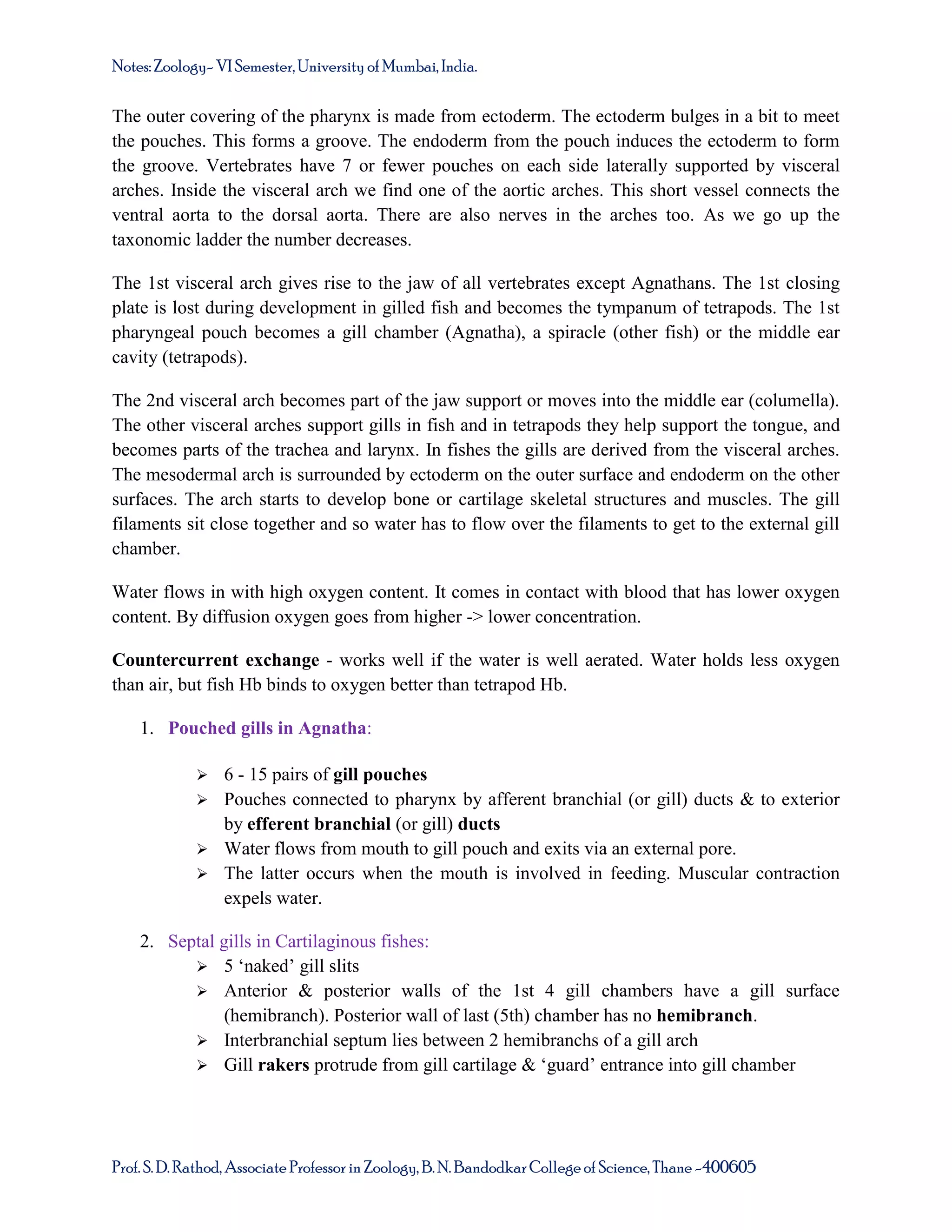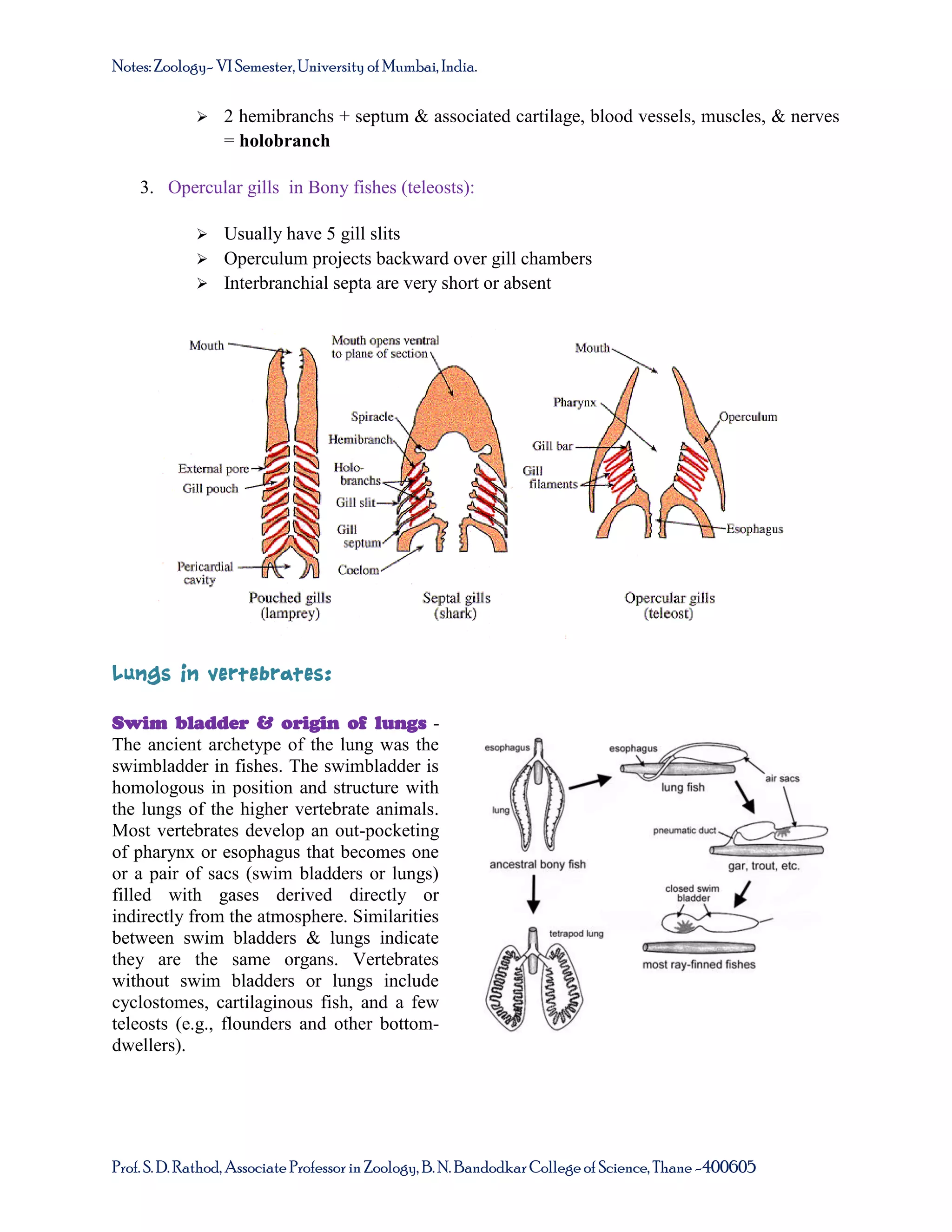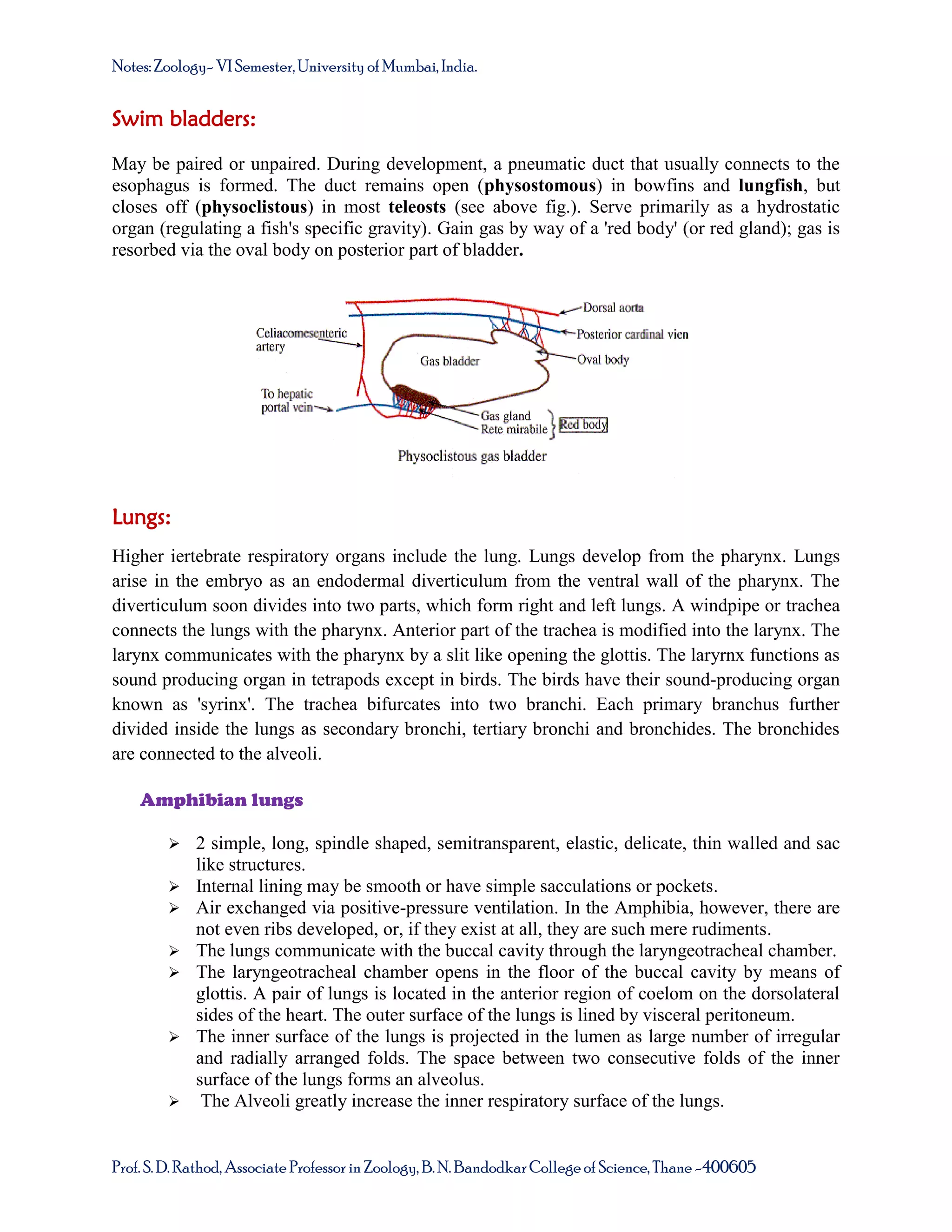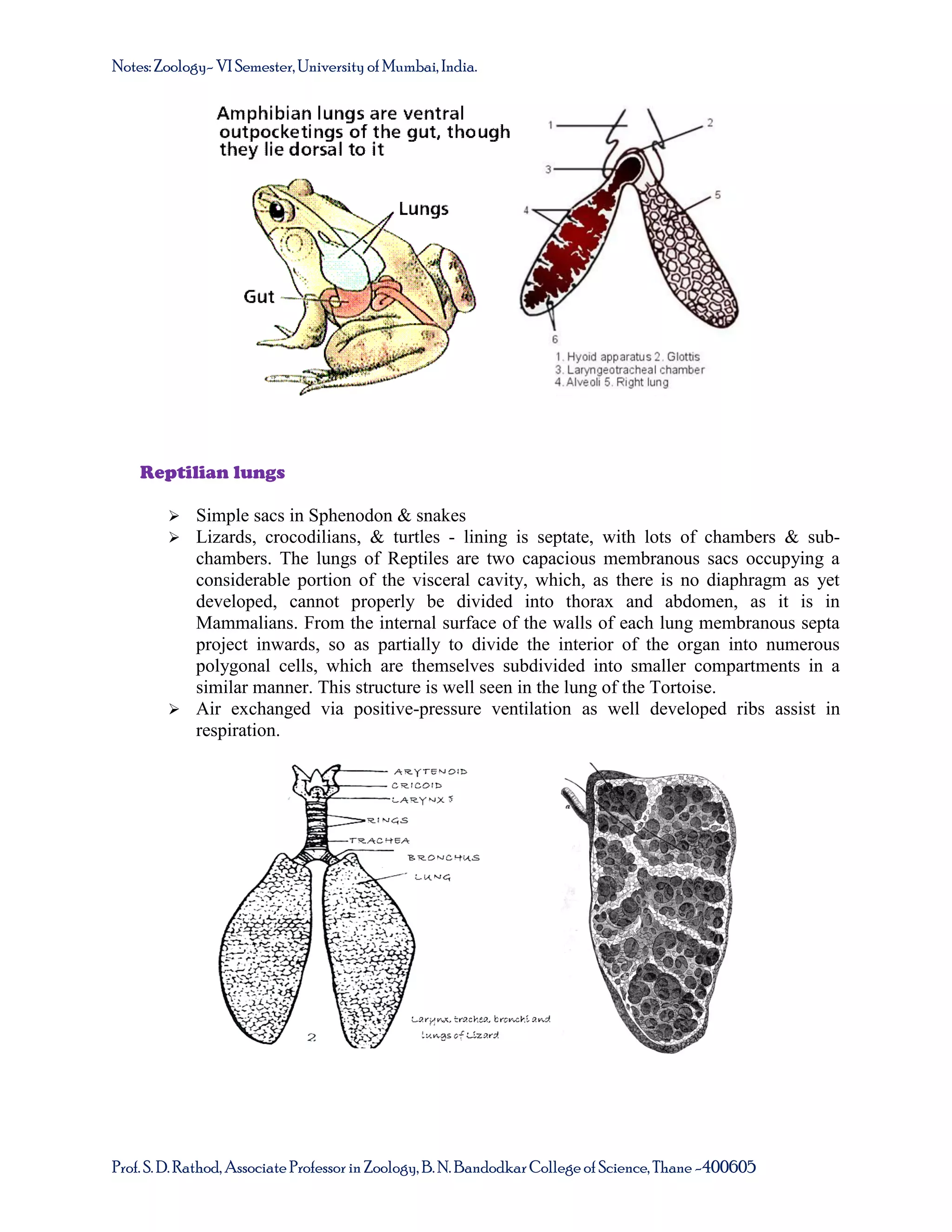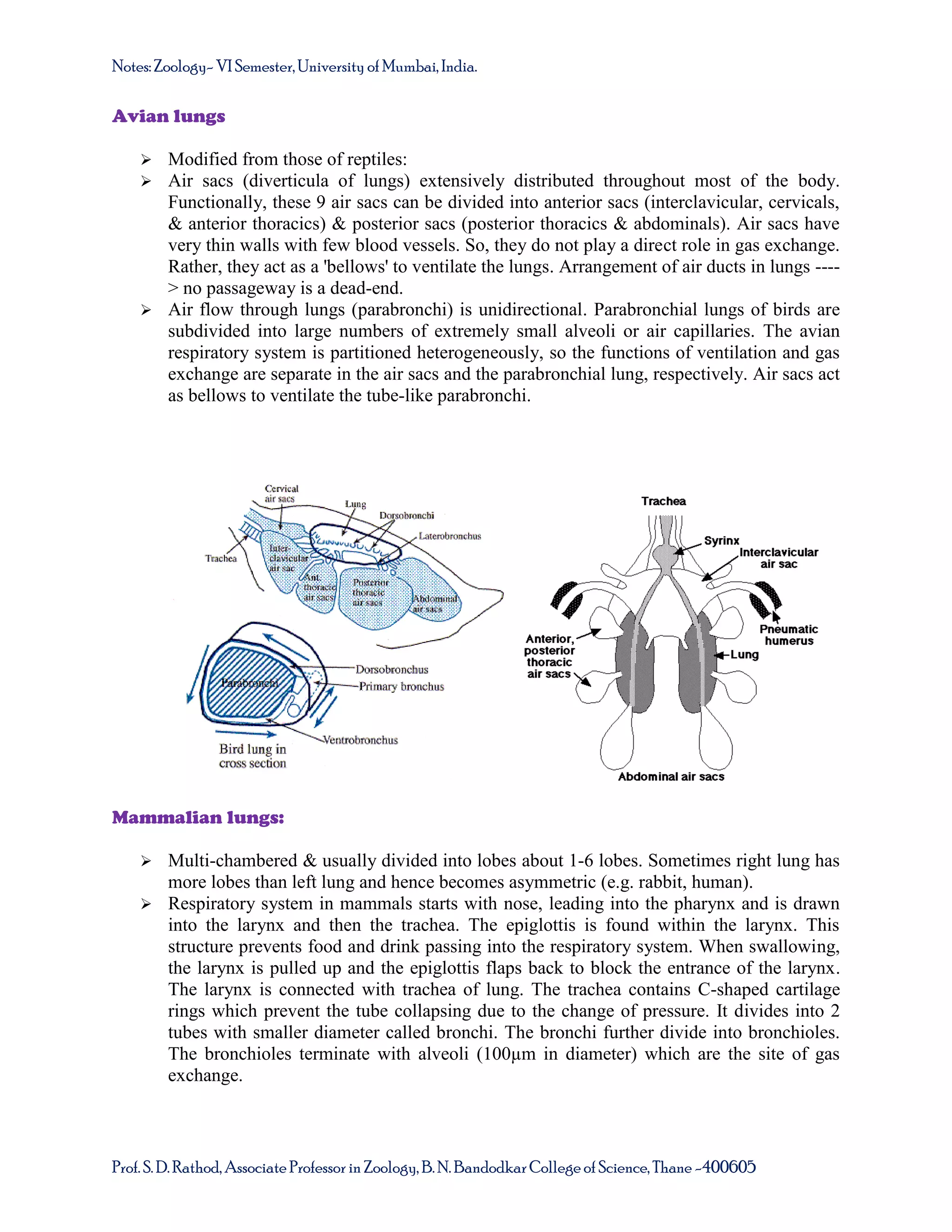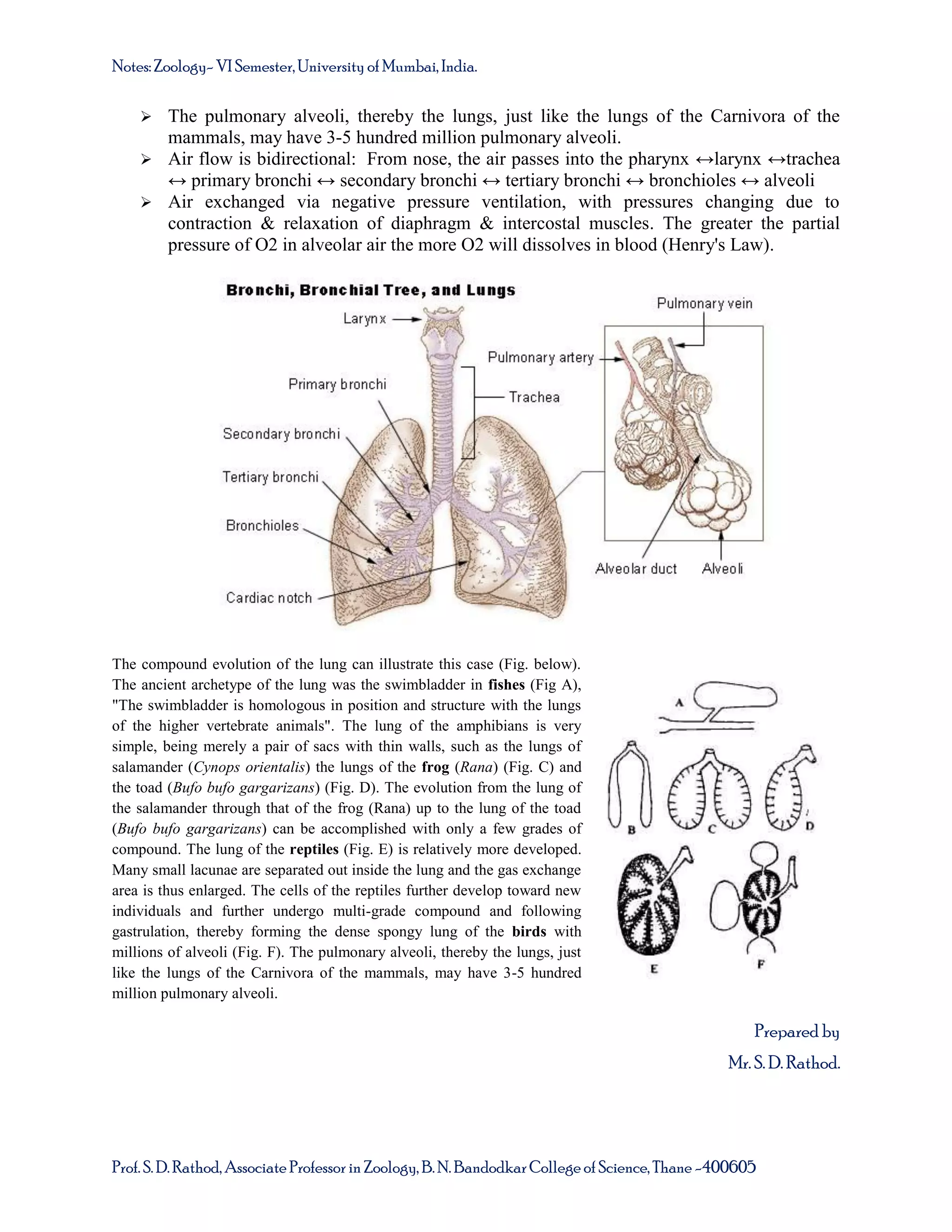The document summarizes the respiratory systems of various chordates. It describes how skin, gills, and lungs have evolved for respiration in different vertebrates. Skin respiration occurs mainly in amphibians like salamanders through their thin skin. Cartilaginous and bony fishes respire using gills consisting of pouches and slits. Lungs evolved from the swim bladder of early fish and are present in tetrapods, with variations in structure between amphibian, reptile, bird, and mammalian lungs.
![Notes: Zoology- VI Semester, University of Mumbai, India.
Comparative Anatomy of Chordates
Respiratory System of Vertebrates
[Skin, gills of cartilaginous & bony fish, lungs in vertebrates]
Skin (cutaneous) respiration in vertebrates:
Respiration through the skin can take place in air, water, or both
Most important among amphibians (especially the family Plethodontidae)
Adult, terrestrial salamanders of the family Plethodontidae, however, rely solely on
cutaneous respiration, as they lack lungs and gills. Species that rely mainly on cutaneous
respiration are typically long, cylindrical in shape, with thin epidermal layers laden with
dense capillary beds that pickup O2 and expel
CO2. Cutaneous respiration is the absorption of
oxygen, and disposal of carbon dioxide, through
the skin e.g. Plethodon spp. The long, cylindrical
shape creates a high surface area to volume ratio,
which enhances the amount of oxygen diffused.
To further promote cutaneous respiration, these
salamanders also have slow metabolisms, costal
grooves that increase the surface area, and the
ability to withstand oxygen debt through anaerobic
glycolysis (energy metabolism). All of these
features make for the successful utilization of
cutaneous respiration in most amphibians. Aquatic
species Giant Salamanders also possess large folds of skin that increase the oxygenabsorbing surface area, thus increasing the oxygen intake.
Plethodon spp.
Frog
Salamander
Gills in cartilaginous and bony fish:
If we look at the pharyngeal region of a vertebrate embryo we find that the wall of the pharynx
develops pouches that go out. The lining of these pouches is endodermal tissue. Between the
pouches we have a piece of tissue that is the visceral arch. It is made of lateral plate mesoderm.
Prof. S. D. Rathod, Associate Professor in Zoology, B. N. Bandodkar College of Science, Thane -400605](https://image.slidesharecdn.com/respiratorysystemofvertebrates-140301155502-phpapp01/75/Respiratory-system-of-vertebrates-Notes-for-the-TYBSc-course-USZ0601Sem-VI-of-University-of-Mumbai-1-2048.jpg)
